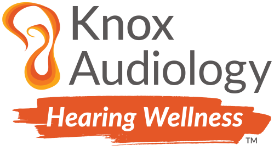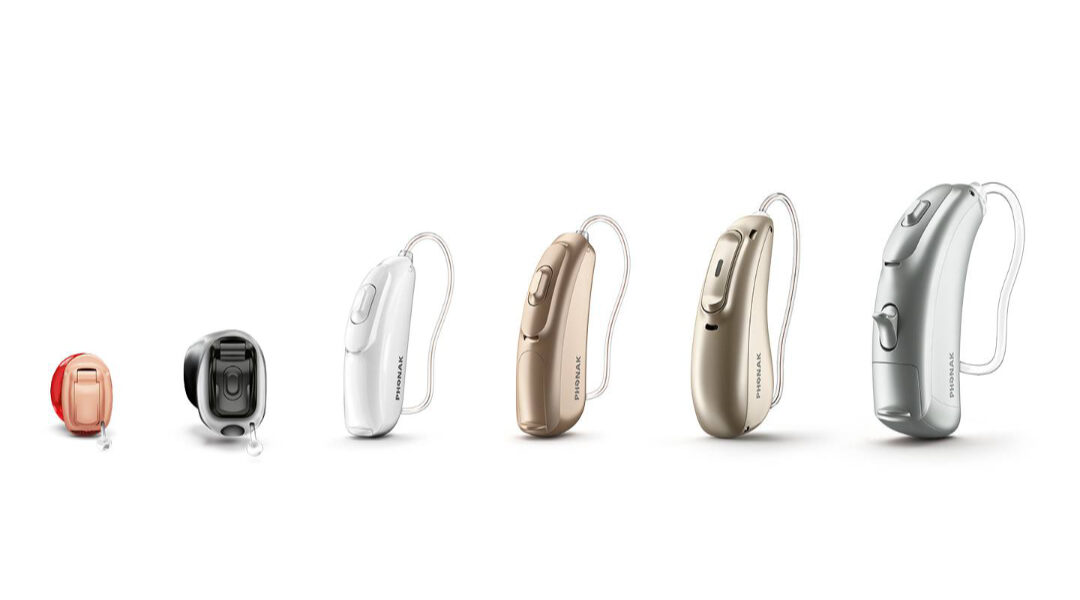Hearing aids come in all different shapes and sizes! Some hearing aids will go behind your ear, with a part leading into your ear, while others might just go in the ear. You may have seen people with larger hearing aids, and you may have not noticed some people with smaller hearing aids were even wearing them! So what are the different types of hearing aids and who might they suit?
Behind the ear (BTE) hearing aids
These hearing aids have the hearing aid sitting behind the ear, and a hollow tube which goes from aid and into the ear. At the end of the tube there is a dome or a mould which can be custom made for your ear. All the electronics in BTE’s are in the part that sits behind your ear.
These hearing aids will suit most people, and can come in larger more powerful sizes for greater hearing losses, as well as smaller sizes for mild or moderate losses.
Receiver in Canal (RIC) or Receiver in Ear (RIE) hearing aids
Similar to the BTE style hearing aid, the RIC hearing aid has a part that sits behind your ear. However the difference between the BTE and the RIC devices is that instead of a hollow tube leading from the hearing aid to the ear, the RIC has a wire which leads to a part known as the receiver. The receiver sits in the ear with a dome or a mould on the end. Because the receiver is in the ear, this means that the RIC style of hearing aid can be a lot smaller than the BTE style of hearing aid (which has the receiver encased in the unit behind the ear). The wire on the RIC device is also often more invisible that the hollow tube on the BTE. Thus this device may be more desirable for cosmetic purposes.
Again this device can be suitable for most people, but may be slightly more difficult to manage if you have any dexterity issues.
Custom hearing aids
Custom hearing aids are made for you and only you! Custom hearing aids sit directly in your ear and have no part that sits behind your ear. For custom devices, an impression of your ear is required in order for the hearing aid to be made perfectly to your ear. These can come in different shapes and sizes depending on your needs and hearing. They can come as a full size, as well as an invisible in canal size which sits quite deep into your ear canal.
Unfortunately these hearing aids are not suitable for everyone. If you have very good low pitch hearing, often wearing these devices will make you sound as though your head is in a bucket. It can also make your own voice sound like it is echoing. Your audiologist will warn you if this might be an issue.
Contralateral Routing of Signal (CROS)
These devices are actually just a microphone, which transmits sound to a hearing aid on the other ear. They can come as a custom or BTE device, and must be used in conjunction with a compatible hearing aid on the other ear.
These devices are used for people with no or very poor hearing in one ear, where a hearing aid could not help on that side. It means that if someone is talking on the side with no hearing, the CROS will pick it up and send it across to the better ear, in order to hear conversation from the poorer side.
Bone Anchored Hearing Aids (BAHA)
BAHA’s require consultation with Ear Nose and Throat (ENT) specialists prior to going ahead. The BAHA is a hearing aid that sits on the head, behind the ear, but does not need to go in the ear. The way the BAHA stays on is by either a clip or magnet inserted under the skin. However this does require a surgery. The device works by sending sound through the skull, straight to the inner ear.
These devices are only used if a traditional hearing aid is not an option, mainly due to issues in the ear canal or middle part of the ear. One such example is people with chronic discharge in the ear. As the discharge can affect a traditional hearing aid, the BAHA will not be affected.
While battery operated devices are still available, many hearing aids these days can come as a rechargeable option. Another common feature is the ability to stream phone calls, videos and music through your smart phone or device straight to the hearing aids!
When you come in to the clinic for an aid discussion, the audiologist will give you all of your options, and make recommendations on what they believe will be the best device for you. If you have any requests make sure you mention them to the audiologist, so that they can incorporate this into their recommendation for you. If you would like to book a hearing aid discussion call us on 9839 3350 for the Boronia or Doreen clinics or 9800 5697 for the Wantirna clinic.

